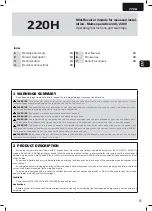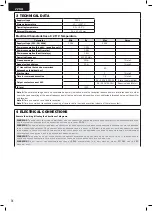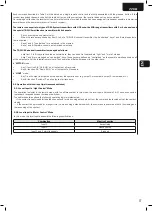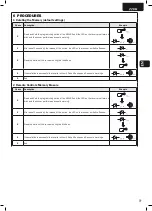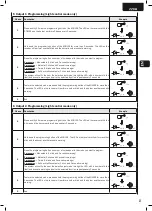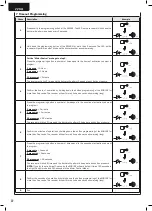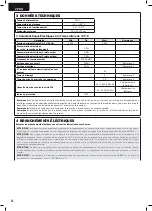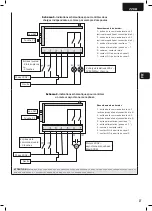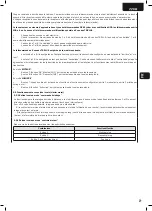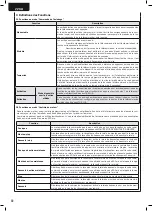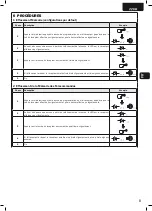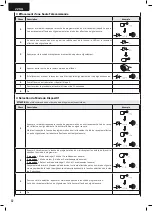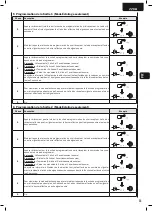
18
3 Functions Definitions
3.1 Functions of “Light Control” mode
Function
Description
Monostable
The selected output is activated when pressing any one of the corresponding buttons on
the remote control.
If the output is already active (for example, during the corresponding activation of the local
command), a subsequent activation command (e.g. pressing the corresponding button on
the remote control) is ignored.
Bistable
The outputs are controlled as follows:
•
First press of the button: the stored output on the corresponding button is activa-
ted.
•
Second press of the remote control: the output is disabled
In addition, when the local switch is closed, and its output is active, if you press the cor-
responding button on the remote control the output turns off, and when you reopen the
switch the output is activated again.
Finally, the bistable is the default mode in which receivers come out of the factory, it is
automatically reset after erasing the memory.
Timed
In this mode, the selected output is switched on remotely to the pressure of any of the cor-
responding buttons on the remote control and remains active for a period of time (timeout)
previously stored in the device. The output can be turned off when you press the button,
after a minimum time of 5 seconds.
The output can be controlled similarly also in local.
(E.g.: if the switch is closed, the output is turned on for the set time, after which turns off. If
you then open the switch, the output is activated and the timer starts again. Changing the
status of the switch is equivalent to pressing the button: it causes the deactivation of the
output, after a minimum time of 5 seconds).
Activation
Mode available for
the function in use
In this mode, all of the outputs of the associated receivers are activated/deactivated (de-
pending on the operating mode set) by pressing key 7 of the TR-PLUS 8-channel multifun-
ction transmitter.
Switch-off
In this mode, all of the outputs of the associated receivers are deactivated by pressing key
8 TR-PLUS 8-channel multifunction transmitter.
3.2 Functions of “Motor Control” mode
The “Motor Control” mode features a user-programmable timeout whose purpose is to stop in any case the received command (either
from remote or local inputs) to safeguard the motor.
The relays cannot be active simultaneously. Any change of activation will be preceded by a deactivation of both outputs for a minimum
period of 500 ms.
Function
Description
Stepped
The receiver executes the command Step by Step, i.e. at each new command reception
from the remote or at each new local input, will observe the sequence of UP-STOP-DOWN-
STOP-UP...
Ascent/stop
Upon reception of the command the receiver activates the ascent relay for the time set,
the reception of a second command deactivates the relay.
Descent/stop
Upon reception of the command the receiver activates the descent relay for the time set,
the reception of a second command deactivates the relay.
Deadman Stepped
Upon reception of the command the receiver behaves as per 2.1 without executing the
STOP command between ascent and descent.
In addition, the activation of the relay is performed only for the period in which the recei-
ver recognizes the radio code / local button.
The relay is deactivated if the command is no longer present for a continuous period of
500 ms or if the maximum working time has expired.
Deadman Ascent
Upon reception of the command the receiver activates the “ascent” relay.
The relay is deactivated if the command is no longer present for a continuous period of
500 ms or if the maximum working time has expired.
Deadman Descent
Upon reception of the command the receiver activates the “descent” relay.
The relay is deactivated if the command is no longer present for a continuous period of
500 ms or if the maximum working time has expired.
Stop
Upon reception of the command the receiver disables the “ascent” or “descent” relay.
Ascent
Upon reception of the command the receiver activates the “ascent” relay for a maximum
time equal to the maximum working time set.
Descent
Upon reception of the command the receiver activates the “descent” relay for a maxi-
mum time equal to the maximum working time set.
Summary of Contents for 220H
Page 87: ......










